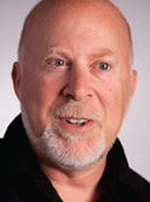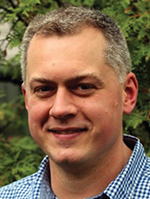Issue:May 2022
AUTOMATION SOLUTIONS - The Future of Lab Tech Will Combine Automation, Accuracy & Agility
INTRODUCTION
COVID-19 has tested the scientific community. Challenges arose from vaccine design and development through increased testing to continuing research amid global supply shortages. As a result, researchers showed striking innovation and unprecedented agility. Times are changing, and we, in the life sciences, must be prepared and flexible. The pandemic shows the need to streamline and automate processes. It also warns us to be on guard for supply line failures. These processes speed the development of new medicines and vaccines.
Accelerating development comes down to designing and using flexible automation solutions. These solutions, along with smarter instruments and new consumable paradigms, help meet researchers’ needs. Knowing how and when to use specific instruments and resources includes being strategic about the use of consumables, including plastic tips. Tip demand has increased during the pandemic as the supply of tips has been reduced by supply chain issues. For some workflows, plastic tips are non-negotiable. This is true when following standardized and regulated procedures or when microliter-to-milliliter volumes are involved. Recent tip shortages coupled with the fact that not all tips are equal (some available tips lack quality or compatibility with specific instruments) have led researchers to reconsider their liquid handling. Some workflows can leverage instruments with fixed tips — for example, workflows in which washing the tips is sufficient. In some cases, pairing liquid handlers with bulk fillers can reduce tip use if a reagent is common to all wells.

USING ACOUSTIC ENERGY TO MOVE LIQUIDS
Sometimes tipless solutions may be preferable, particularly for complex transfers or for miniaturization. One such instrument uses sound waves to move liquids. Focused acoustic energy from a transducer to the bottom of a source well of a microtiter plate causes a droplet of liquid to eject from the source well. The droplet travels a few centimeters and lands in the desired well of an inverted destination plate. This technique reduces the need for dilution plates, eliminates the need for tips, can reduce reagent usage by more than 90%, and can allow transfers to hundreds of thousands of wells per day.
To ensure the correct amount of energy is used and the focus is maintained, the system first audits each individual well to determine fluid depth and the basic nature of the fluid. This plate audit procedure uses low power acoustic pulses (similar to medical ultrasound) to disturb and record the effects of sound on the fluid. It takes only milliseconds per well. When a plate is audited, the acoustic transducer then addresses each individual source well with the energy needed to eject a droplet (with volumes as low as 2.5 nL). Droplets are ejected at 500 droplets per second to rapidly accommodate a range from nanoliter (nL) to microliter (μL). Liquid from any source well can be directed to any destination well. Different liquids in the source plate may be pooled into a single well of the destination. The entire audit and transfer process takes a few minutes and is compatible with wet and dry destination plates in 96-, 384-, and 1536-well formats.
One advantage of acoustic transfer in miniaturized experiments is the reduction of risk. Experimental errors due to solvent fluctuations and inaccuracies that can come from pipetting tiny volumes go away. Researchers have found that compounds can stick to plastic. This may not matter for larger, 96-well assays, but when miniaturizing to 384- and 1536-well microplates, the math changes. The relative surface area of a tip increases compared to the volume the tip contains. This means that active components can be lost from the assay to the tip. In the end, and especially in miniaturization, it is the quantity of compound delivered rather than volume that is most important. Acoustic liquid handling tackles these concerns.
HOW IMPROVING ACCURACY CAN BOOST EFFICIENCY & LOWER COSTS
Part of the beauty of this marriage of automation and miniaturization is that it lowers costs for certain types of research by reducing the amount of materials and compounds required. Pharmaceutical companies were some of the first to integrate acoustic liquid handlers. In drug discovery, researchers test significant numbers of compounds on a given cell line or biochemical assay. These experiments are much less expensive in high-density microtiter plates. Using an acoustic liquid handler can be especially useful when testing combination drug therapy. As effective as combination drug therapy may be in reducing toxicity, the choices and ratios of drugs is difficult to study because one must determine joint efficacy across different doses of each compound. An acoustic liquid handler transfers any drugs, in any ratios, to any well. Synergistic potency shows up quickly and easily in the assay analysis.
Genetic engineering labs use acoustic liquid handlers in their efforts, largely to save time. Synthetic biology labs mix dozens of components in their experiments. This makes some of the most complicated workflows of any field. Acoustic liquid handlers can create droplets from dozens of different source wells, where the fluid properties of each well may vary, in rapid succession and pool them into a single destination well. Acoustic liquid handlers save researchers many hours in these assembly operations.
Yet, many situations and workflows need tip-based solutions, either alone or in combination with an acoustic liquid handler. Tip-based liquid handers are becoming extraordinarily advanced. They reduce the researcher’s time commitment, both “hands-on time” pipetting as well as presence in the lab, while allowing customized solutions when research needs change. They allow automation of steps previously done by hand, including complex chemistry methods, as in next generation sequencing (NGS) library preparation, and even reagent identification and transfer.
Advanced instruments handle work-flows that require a wide range of transfer volumes with air displacement pipetting with selective tip capabilities, along with sophisticated labware transport systems. Onboard technologies like advanced optics validate the accuracy of setup and allow the researcher load the deck and then leave the lab. The researcher can run and monitor the system remotely from desk or home. Importantly, highly automated liquid handlers often generate less hazardous waste, making them ecologically sound.
THE FUTURE OF ADVANCED AUTOMATION
Finally, other exciting instruments use other technologies to enhance automation. For instance, one automated instrument uses a magnetic mixer in the critical DNA cleanup needed for polymerase chain reaction (PCR). When paired with reagent kits incorporating magnetic bead technology, the instrument allows for a semi-automated cleanup process, reducing the number of touch points from 300 to 50, and reducing DNA cleanup time by half.1
These examples show how industry is using outside-the-box thinking to move toward greater automation, accuracy, and agility. Automated instruments make workflows easier, faster, and less costly. They allow the design of bespoke solutions to fit an organization’s needs, even when those needs are evolving. Knowing when to use consumables and when to conserve them is important, as we look toward emerging from the supply crunch. Companies investing in future-facing technologies and solutions will continue to do so. These advances provide flexibility to move through uncertain times as we push into the next decade of research. As we continue toward greater sustainability, we will witness even more creative technologies and innovative instruments in the coming years.
REFERENCE
- https://www.beckman.com/reagents/genomic/dna-cleanup/emnetik-24-pcr/performance.

Rich Ellson is Chief Technology Officer and heads the Global Research Organization at Beckman Coulter Life Sciences. He joined the company in 2019 with its acquisition of Labcyte Inc., where he served as Chief Technology Officer, Board Director, and a Founder since 2000. He is the inventor of more than 80 granted US patents. Some awards of note include the 2006 PolyPops Foundation Award from the Society for Biomolecular Sciences (SBS) for acoustic dispensing technology and Northern California EY Entrepreneur of The Year 2013 for Life Sciences, and a Finalist in the National EY competition. In 2015, he was named a Technology Pioneer in 2015 by the World Economic Forum. He is a Fellow, prior Board member, and active volunteer in the Society for Laboratory Automation and Screening (SLAS).

Dr. John Fuller is the Global Commercial Product Manager for Echo Drug Discovery at Beckman Coulter Life Sciences. He was previously a field applications scientist for Labcyte. He earned his PhD from the U.N.T Health Science Center and completed a post-doctoral fellowship at Johns Hopkins University School of Medicine.
Total Page Views: 3103










